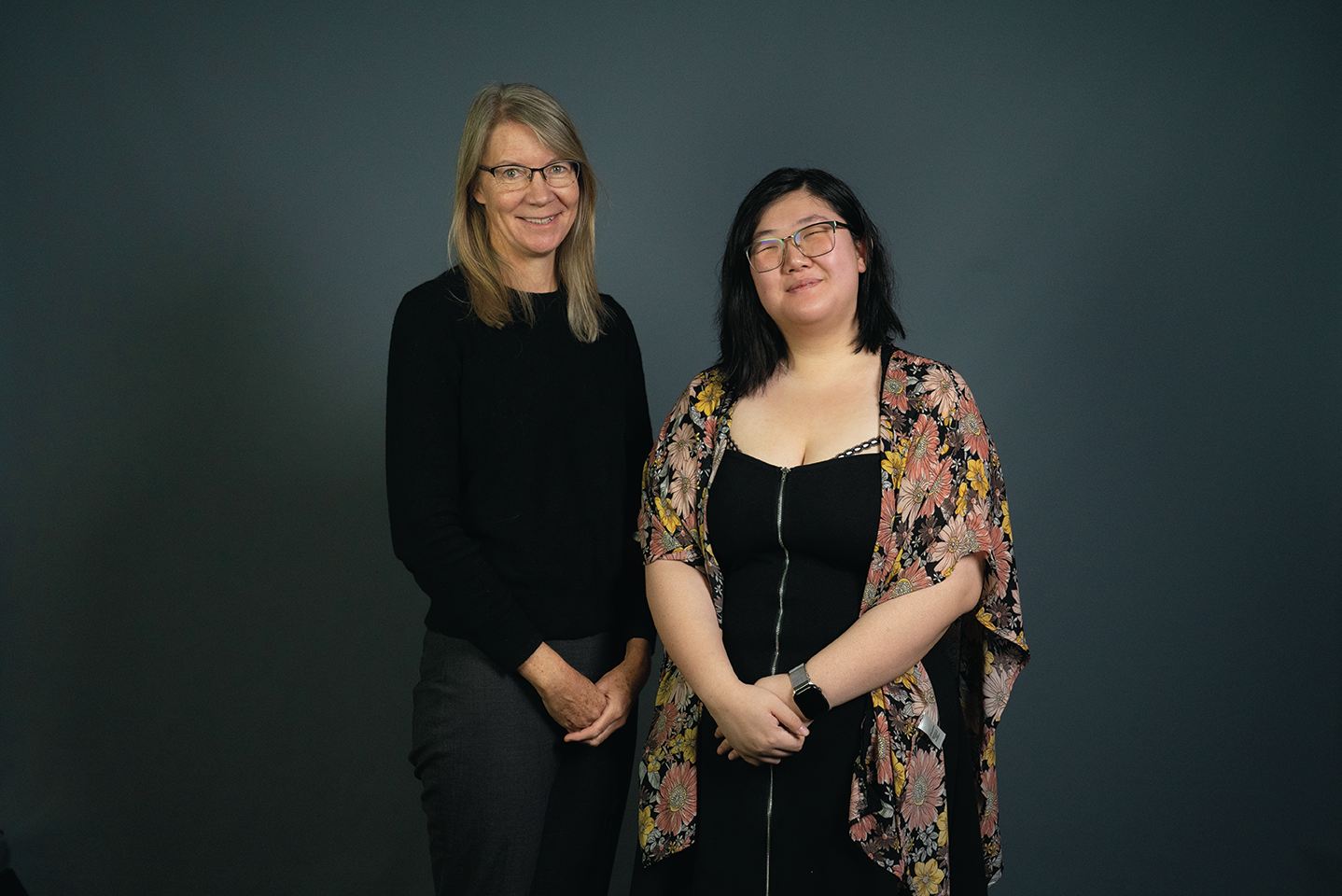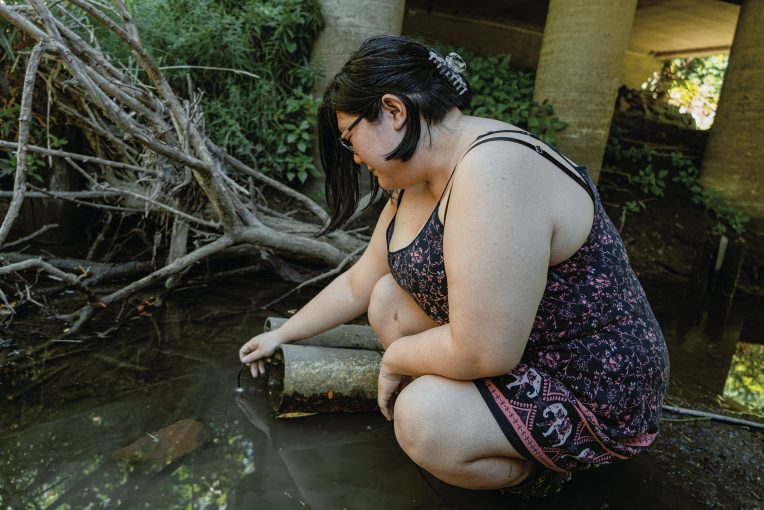One afternoon late last summer, Youmi Hong clambered over a bridge railing, waded through a patch of high grass, and carefully tread down a slippery path. Then she stepped into a slow-moving muddy mess known as Six Mile Creek.
“This is my workplace,” said Hong with a laugh.
The second-year master’s student in geology was checking on her equipment: an underwater microphone called a hydrophone; a recording device; and turbidity sensors, which she stored in two tubes in what at the time was a shallow pool of water. Hong employed those devices for six months last year to hear what was happening in a short stretch of the creek, which flows into Evergreen Lake from just north of Normal.
Hong was listening for different types of aquatic animals like crayfish and several species of fish. The latter make noise while swimming and mating, digging up the creek bed and creating sediment piles. She was trying to determine why the water was becoming more turbid, or murky, at roughly the same time overnight. Were fish or some other water organisms causing the cloudiness, or were humans or terrestrial wildlife stirring up the water?
To find out, Hong used an innovative approach, referred to as passive acoustic monitoring, to keep track of the sounds in the creek and to analyze the sound data. She is compiling her findings for her master’s thesis due this spring while making a scientific contribution to a pioneering research area.
“This is a very novel field of work in freshwater systems,” said Hong, of Edmond, Oklahoma. “There has been a handful of studies done around the world using this approach in freshwater lakes, but in streams, I don’t think we’ve seen any papers.”

Hong got the idea for this research from her thesis mentor, Dr. Catherine O’Reilly, a professor of Geology. “We’re seeing this change in the water clarity and reduced water quality happening mostly very early in the morning,” O’Reilly said. “So how are you going to figure out what’s going on at 3 a.m. in the stream? You could do it in more traditional ways with nets and fishing poles, but as soon as you start mucking around, all those fish are going to go somewhere else. So what we are trying to do is figure out what might be happening in the stream without actually disturbing the stream.”
O’Reilly connected Hong with French researcher Dr. Camille Desjonquères, a postdoctoral fellow at Université Grenoble Alpes, who has conducted similar ecoacoustic research and provided some of the data coding. Hong has been analyzing hundreds of gigabytes of sounds in a programming language called R.
“I’ve been analyzing with different indices to try to find these different types of organisms and see these relationships in our stream,” Hong said. “Obviously, not all indices work for what our purpose is, but we have a couple, including a biodiversity index, and another one for acoustic complexity—so how complex the sounds are—and we can very easily distinguish things that are biotic in nature versus things that are human- or machine-induced.”
The researchers cannot distinguish which fish they may be hearing. “There’s a huge sound library for things that are terrestrial in nature like birds and other animals, but in terms of fish or insects inside the stream, there’s probably a library of less than 500 sounds,” Hong said. “And we’re finding that a lot more research has been coming out that if there is a lot of interference, especially with like human- induced sounds such as machines, fish will often change their pitch. So the sound library may not even be useful for our purposes.
“And in reality, what we’re wanting to look for is if there is organism activity at night, using those acoustic indices and using those findings that we have from our microphone that is underwater to see if we can put those two together.”
The researchers said understanding the source of turbidity in water is worth researching because it may impact our water supply.
“Turbidity is important because a lot of the sediments can either harbor microorganisms or bacteria that can be extremely harmful to human life, especially because we drink a lot of the water that comes from small agricultural streams like this that feed into larger rivers that we use for our water sources,” Hong said.
O’Reilly is an internationally renowned researcher focused on how human-induced climate change is endangering freshwater ecosystems. She sees how Hong’s research could be applied to research farther afield.
“I’ve been wanting a student to test out this idea for a while, and Youmi has done a great job, especially working with the data,” O’Reilly said. “I would love to be able to take some of these ideas and test them in other parts of the world.”
Hong’s research has been supported by a BirdFEEDER grant from Illinois State’s Office of Student Research and separate funding from the Geological Society of America (GSA). She presented on her research at the GSA annual meeting last fall and plans to share her findings at the Illinois State University Research Symposium this spring. She also hopes to add to the scientific literature in this understudied area by publishing her research in an academic journal.
The research experience is helping to prepare Hong for her career. She wants to manage a municipal water supply or do related consulting after she graduates this May.
“Being able to conceive of and manage my own project, being able to analyze data in a way that makes sense overall in my project, and being able to keep a clear mind and discussing with my peers about how to do this sort of thing will help me.”

